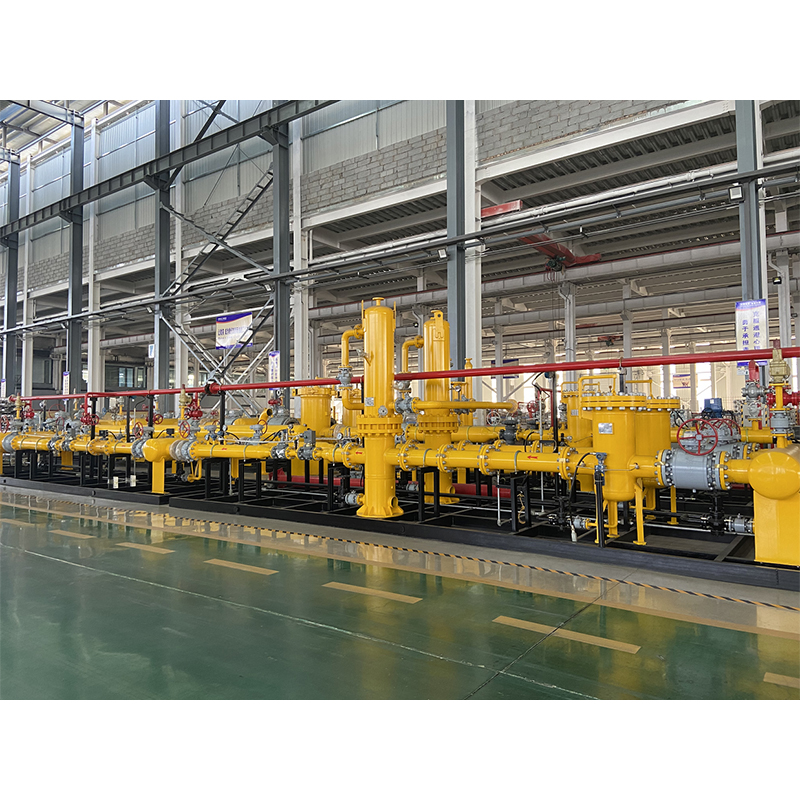
Nov . 30, 2024 16:19
Back to list
Gas Pressure Reduction Station Overview and Operational Insights
Gas Pressure Reduction Stations Essential Components of Natural Gas Infrastructure
In the complex world of natural gas distribution, gas pressure reduction stations (GPRs) play a crucial role in ensuring that natural gas is delivered safely, efficiently, and reliably to end users. These facilities are integral parts of the gas transmission and distribution network, acting as the vital link between high-pressure transmission systems and the lower-pressure distribution networks. Understanding the purpose, operation, and importance of gas pressure reduction stations sheds light on their significance in the energy sector.
Purpose of Gas Pressure Reduction Stations
Natural gas is typically transported over long distances through high-pressure pipelines to minimize energy loss and avoid degradation in quality. However, once the gas reaches its destination, it often needs to be delivered at much lower pressures suitable for residential, commercial, and industrial use. Gas pressure reduction stations are designed to reduce the pressure of the incoming gas efficiently and safely, making it appropriate for downstream distribution.
The primary function of these stations is to lower the pressure of the gas, which can range from several hundred pounds per square inch (PSI) down to a few PSI. This reduction is critical for the safe use of gas in homes and businesses, as high-pressure gas can pose significant hazards, including risks of explosions and leaks.
.
The operation of GPRs involves several key components and processes that work together to ensure effective pressure reduction. At the heart of the station are pressure regulators, which automatically adjust the pressure of the gas flowing through the system. These regulators respond to changes in flow rate and pressure within the station, ensuring a steady output that meets the demands of the distribution network.
محطة تخفيض ضغط الغاز

In addition to regulators, GPRs may also include filters to remove impurities from the gas, and heaters to prevent condensation that can occur in colder temperatures. Some stations are equipped with safety valves that provide an additional layer of protection against overpressure situations. The design and operation of these stations are carefully regulated to meet strict safety standards, ensuring that they function reliably under varying conditions.
Importance in the Energy Sector
Gas pressure reduction stations are indispensable in the broader context of natural gas infrastructure. As demand for natural gas continues to grow, the efficiency and reliability of its delivery depend significantly on the effectiveness of these stations. They play a vital role in maintaining the continuity of supply, especially during peak demand periods, such as cold winter days when heating needs soar.
Moreover, the integration of advanced technologies into GPRs is enhancing their performance and safety. For instance, remote monitoring systems allow operators to track pressure and flow in real time, enabling quicker responses to potential issues. This technological evolution is crucial in an age where efficient energy use and safety are paramount.
Furthermore, as the world grapples with the transition towards cleaner energy sources, natural gas is often viewed as a bridge fuel. Its role in reducing carbon emissions when compared to coal and oil underscores the need for a robust and reliable infrastructure, including GPRs. By facilitating the smooth delivery of natural gas, these stations support the energy transition and help balance the grid during fluctuations in renewable energy production.
Conclusion
In conclusion, gas pressure reduction stations are essential components of the natural gas supply chain. They ensure that gas is delivered safely and efficiently to consumers by managing pressure levels that meet the needs of different end users. As the energy landscape evolves, the importance of GPRs will only continue to grow. Investing in the modernization and expansion of these facilities is critical not just for reliable energy supply, but also for supporting broader energy transition goals and enhancing energy security. Understanding their function and significance helps illuminate the foundational role they play in our daily lives, reminding us of the intricate systems that work tirelessly behind the scenes to power our homes, businesses, and industries.
Latest news
-
Safety Valve Spring-Loaded Design Overpressure ProtectionNewsJul.25,2025
-
Precision Voltage Regulator AC5 Accuracy Grade PerformanceNewsJul.25,2025
-
Natural Gas Pressure Regulating Skid Industrial Pipeline ApplicationsNewsJul.25,2025
-
Natural Gas Filter Stainless Steel Mesh Element DesignNewsJul.25,2025
-
Gas Pressure Regulator Valve Direct-Acting Spring-Loaded DesignNewsJul.25,2025
-
Decompression Equipment Multi-Stage Heat Exchange System DesignNewsJul.25,2025

